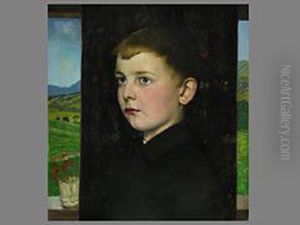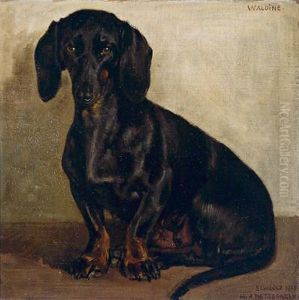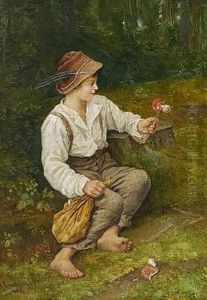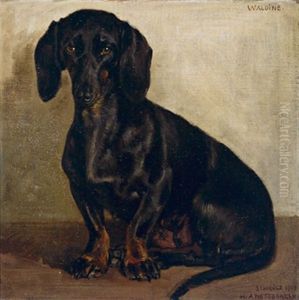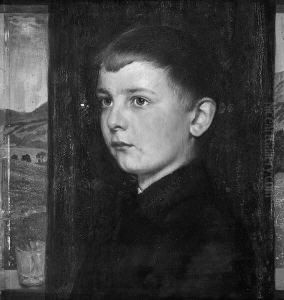Hans Anetsberger Paintings
Hans Anetsberger was a German painter and graphic artist known for his contributions to art during the first half of the 20th century. Born on March 11, 1895, in Nuremberg, Germany, Anetsberger showed an early talent for drawing and painting. His artistic pursuits were temporarily put on hold due to the outbreak of World War I, during which he served in the German military.
After the war, Anetsberger resumed his artistic career and began formal studies at the Nuremberg School of Arts and Crafts (Kunstgewerbeschule Nürnberg), where he honed his skills in various mediums, including painting, printmaking, and illustration. His early works were influenced by the prevailing styles of the time, including Expressionism and the New Objectivity movement (Neue Sachlichkeit), which reflected a more realistic and sometimes socially critical visual language.
During the 1920s and 1930s, Anetsberger's work gained recognition in Germany. He participated in several exhibitions and started to establish a name for himself as a skillful draftsman and printmaker. His subjects often included landscapes, urban scenes, portraits, and still lifes, executed with a keen eye for detail and a strong sense of composition.
With the rise of the National Socialist regime in Germany, Anetsberger, like many artists of his time, faced the challenge of maintaining artistic integrity in an increasingly repressive cultural environment. It is not clear how deeply Anetsberger was affected by the policies that condemned modernist art as 'degenerate,' but he managed to continue working throughout this period.
After World War II, Anetsberger's art evolved in response to the changing political and social landscape of post-war Germany. He witnessed the reconstruction of his country and the shifts in artistic trends as Abstract Expressionism and other avant-garde movements began to dominate the international art scene. Despite these changes, Anetsberger remained committed to his figurative style, adapting and refining his approach to reflect the times.
Hans Anetsberger continued to work until late in life, leaving behind a body of work that captures the tumultuous era he lived through. His contributions to German art were recognized with various awards and exhibitions. He passed away on December 10, 1984, in Nuremberg, having witnessed and artistically documented a significant period of 20th-century history through his paintings and prints.
